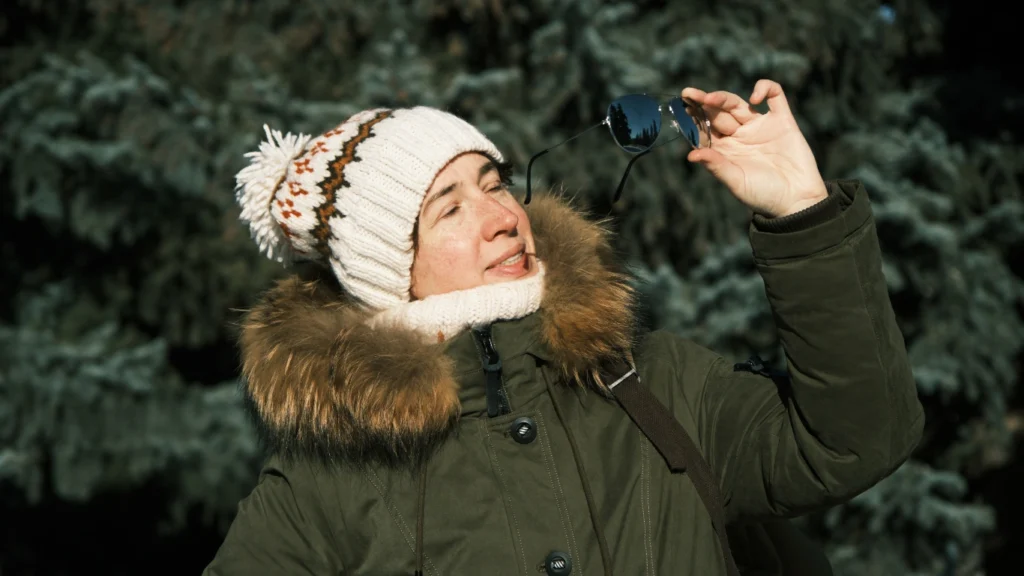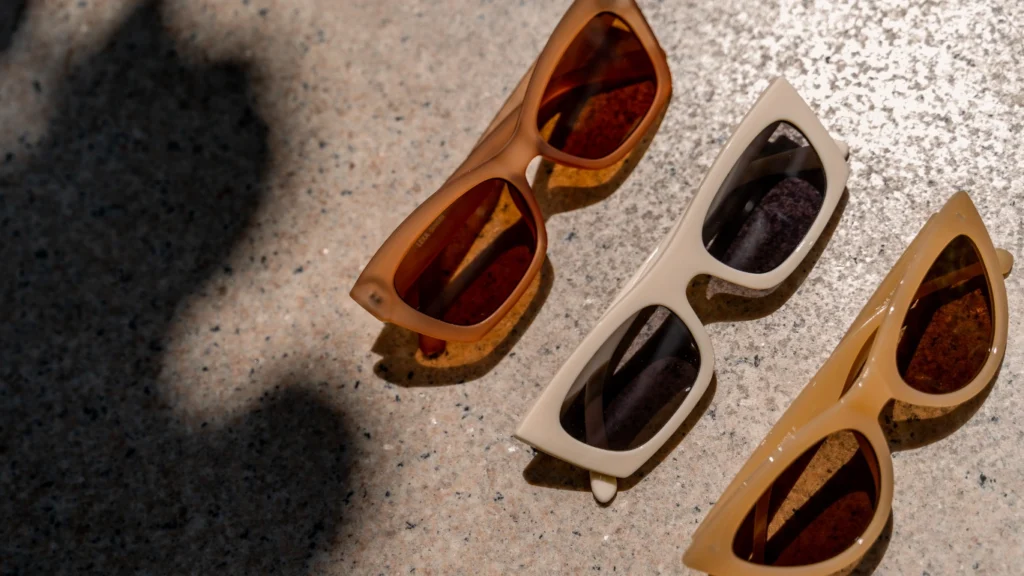Let’s start with something simple: Sunglasses aren’t just for summer.
You know that classic image, someone lounging at Wasaga Beach in July, rocking a pair of shades and soaking up the sun. Sure, that’s one reason to wear them. But what about February, when the snow’s blinding on the side streets of Bolton? Or October, when you’re driving through Richmond Hill and the sunset hits at just the wrong angle? Yep, your eyes still need protection.
Whether you’re 25 or pushing 55, chances are you spend a lot more time outside than you realize, driving, walking the dog, running errands, and watching the kids’ soccer games. During all of that, your eyes are exposed to UV rays. These rays don’t go away just because it’s chilly or overcast.
So, in this post, we’re going to break down why sunglasses aren’t just a summertime thing. We’ll talk about how they protect your eyes, why that matters, and what to look for when buying a pair. Plus, if you’re searching for sunglasses near you, we’ll help make that easier too.
Your Eyes vs. UV Rays: Why This Battle Happens All Year
The sun emits ultraviolet (UV) rays, and those rays can damage your eyes over time. Think of UV rays as sneaky little troublemakers. You don’t always see them, but they’re still there doing damage.
In the summer, we’re more aware of it. The sun is bright, and sunglasses feel like a must. But UV rays are around all year; yes, even when it’s cloudy. They bounce off surfaces like water, snow, and pavement. Snow especially reflects a huge amount of UV light, so those cold winter walks can be just as hard on your eyes as a sunny summer hike.
Wearing sunglasses helps block these rays. It’s kind of like sunscreen for your eyes, except you don’t need to reapply every two hours.

What Can UV Exposure Actually Do to Your Eyes?
We’re not trying to be dramatic, but long-term UV exposure can do a number on your eyes.
Here’s a short list of what it can cause:
- Cataracts – Cloudy patches that form on the lens of your eye.
- Macular degeneration – Damage to the part of your retina that helps you see details.
- Photokeratitis – Basically, a sunburn on your eye (yes, that’s a real thing).
- Pterygium – A weird growth on your eyeball. Not cute. Not comfortable.
The thing is, these don’t happen overnight. It’s slow. You don’t really notice the damage until it starts messing with your vision. And by then, some of the damage can be permanent.
That’s why protecting your eyes before there’s a problem is a smart move.
Real Talk
Let’s say you’re leaving a 9 AM dentist appointment on Major Mackenzie. The sun’s rising, there’s still a bit of snow on the ground, and traffic’s crawling. As you pull out onto Yonge Street, the sun hits you just right, you know the spot, right between your visor and your rearview mirror. You squint. You wince. You kinda guess where the lane is. Not ideal.
Now imagine you had a pair of good-quality sunglasses in your glove box. Pop them on, and suddenly, you’re not guessing anymore. Your eyes relax. You feel more in control.
That’s the kind of everyday stuff we don’t always plan for, but it makes a difference.

Not All Sunglasses Are Equal
Quick quiz: What’s more important UV protection or lens tint?
Answer: UV protection, 100%.
Just because a pair of sunglasses has dark lenses doesn’t mean they’re blocking UV rays. In fact, wearing dark lenses without UV protection can be worse than wearing no sunglasses at all; your pupils dilate, and you actually let in more harmful rays.
Here’s what to look for when you’re choosing a pair:
- UV400 protection – This means the lenses block 100% of UVA and UVB rays.
- Polarized lenses – These reduce glare from surfaces like water, snow, and car hoods.
- Fit and coverage – Bigger lenses or wraparound styles give more protection from rays sneaking in the sides.
- Durability and comfort – If they’re annoying to wear or break easily, you won’t actually use them.
At IndividualEyes, we always help people pick sunglasses that actually do the job without turning it into a big, complicated thing.
Year-Round Sunglasses for Every Season
Here’s a little cheat sheet for when sunglasses really matter—just to hammer it home:
- Spring – Sun’s getting higher, days are longer. Add in pollen and wind, and your eyes are doing extra work.
- Summer – Obvious one. Tons of sun, lots of time outside.
- Fall – Low-angle sun can be super blinding during drives, especially in the early evening.
- Winter – Snow glare and icy reflections are rough. Plus, cold wind can dry your eyes out fast.
So yeah, year-round. No excuses.

“Where Can I Find Good Sunglasses Near Me?”
Whether you’re in Bolton grabbing groceries at Garden Foods or in Richmond Hill hitting up Hillcrest Mall, odds are you’ve seen a bunch of stores selling sunglasses.
But when you’re looking up “optical near you,” there’s a big difference between grabbing a pair off a rotating rack and visiting a local optical like IndividualEyes.
When you come to us, we’re not just handing you a pair and saying, “Good luck.” We actually look at how they fit your face, whether the lenses suit your vision needs, and how they’ll hold up in real life.
And we’re local. We know what the sun’s like at 5 PM on Highway 50. We get it.
The Bottom Line
If you’ve been thinking sunglasses are a “summer thing,” hopefully this post changes that. Your eyes don’t get a seasonal break, and sunglasses shouldn’t either.
At IndividualEyes, we’re here to help you protect your vision in a way that fits your life. No pressure. No pushy sales talk. Just straight-up advice and sunglasses that’ll do what they’re supposed to do.Come by if you’re in the neighborhood or just browse the brands we carry here.



